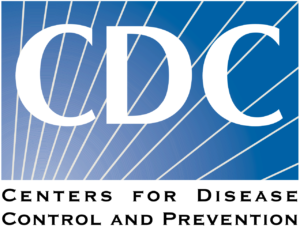

Here are his answers provided in the CDC’s transcript of the press conference:
Why are Baby Boomers so hard hit this year?
LENA SUN of The Washington Post: “Okay. And just another follow-up. Everybody is interested in the baby boomer part…you didn’t have time in the earlier question, but do you want to address…why baby boomers seem to be so hard hit. Do you think compared to the over 65 [group] that they were less exposed to some of these strains as children?”
DAN JERNIGAN: “Yes, I think you’re getting at the heart of the issue, which is a very complicated scientific issue. It’s a concept called imprinting where the first Influenza virus that somebody is exposed to as a child has a way of determining how you respond to Influenzas the rest of your life. For instance, in 2009 when the H1N1 showed up and began circulating rapidly, we saw a strikingly low number of people being hospitalized over age 65. That really reflects the fact that those individuals have been exposed to the H1N1 from back in the first emergency in 1918. So between 1918 to 1947 when that H1N1 was circulating, people that were exposed to that one seemed to respond better when this 2009 H1N1 showed back up. So the same thing may be true in the opposite way that people that were exposed after 1947 actually were exposed to H2N2 and H3N2, which are different viruses and that those exposures may make them a little more likely to have problems with H1N1. So there’s still a lot for us to learn about this, but I think it just shows the complicated nature of Influenza that it really depends on a mixture of things: the environment, the virus itself and how it changes, but also the host and the changes that occur as people get exposed to different influenza viruses over time.”
Is the H3N2 strain more deadly?
NATASHA CHEN of CNN: “Thank you so much. I wanted to ask a little bit more about H3N2. We’re talking about years when this is the dominant strain that the illnesses and deaths are more significant. Is there something about H3N2 that makes it more deadly or is it simply a result of what people have been exposed to in the past?”
DAN JERNIGAN: “H3N2 definitely is one that has intrinsic features about the virus that does make it more likely to cause severe disease. Exactly what the genetic and antigenic features are that make that happen is actually still being investigated now. We know that H3 is causing worse disease. Exactly why still needs to be figured out. H3N2 first showed up 50 years ago, so this is the 50th commemoration this year of the pandemic emerging back in 1968. Since that time, that virus has continued to change. So it’s getting down a path now where it’s gone through lots of changes, but it’s amazing how much it’s able to evade the human immune system still. Also, that this particular virus has lower vaccine effectiveness. The exact reasons for that are still being figured out. We do know that this particular virus, that’s been around 50 years, is very human adapted. So if you try to grow it in eggs, the virus ends up changing in ways that make it look different than what’s actually circulating out there. Those changes unfortunately lower the similarity to the circulating viruses and therefore that might be impacting the vaccine effectiveness. We don’t know that for certain, but we are trying to understand if in fact having to grow it in eggs is leading to some of the lower vaccine effectiveness. Most of the vaccine that people get given each year is from egg-based manufacturing.”
DONALD MCNEIL from The New York Times: “Lena’s question, is it may be worse than 2014, is it may be as bad as 2003-2004 which would be the earliest you tracked.”
DAN JERNIGAN: “For hospitalizations, the overall rate right now is tracking about the same as the 2014–15 season, except for people who are under age 65. We are seeing more hospitalizations in that group, but the overall amount is about the same as 2014-15. We don’t know. I mean these numbers can change. We may go above the 2014-15 season and so I think it’s a little hard to make some of those comparisons. From an activity standpoint, we’re seeing the most influenza-like illness activity since 2009 and for hospitalizations we are seeing about the same rates as we saw in 2014-15.”
Should schools close down to prevent flu spread? Why do schools close?
SARAH TOY from The Wall Street Journal: “Thanks for taking my question. So there have been reports about schools closing due to the severity of the flu season. Can you tell us if CDC is aware of that? If you know how widespread these school closures are? And what the vaccination rates are among school aged children?”
DAN JERNIGAN: “So a couple of things now. In terms of school closures, we know that every year schools close. These are closing of schools not to prevent transmission of flu, but they are usually reactive school closures because a lot of kids have flu and the teachers are out. So they simply close because they are not able to have school. That happens every year. We know in seasons with H3N2 like this one and last season and 2014-15, we see more of those school closures occur. And CDC does have a system that actually can monitor school closures. I don’t have the percentage numbers with me here, but there is a system that we use to monitor school closures around the country. In terms of vaccine coverage, essentially the younger you are, the better your vaccine coverage. You start at the top with kids that are under 18 years of age, down to age 13. So this is kids that are 13 to 17 years of age, 46.8 percent. For those that are 5 to 12 years of age, it’s 61.8 percent. For those that are 2 to 4 years of age, it’s 66.8 percent. Then for the very youngest, 6 to 23 months old, it’s 75.3 percent. So that’s an overall for under age 18 of around 60 percent.”
SARAH TOY: “I just want to quickly follow up. At this point, would you be recommending that schools close because of just how the flu is spreading or do you think that is just not something that they need to be thinking about at this point?”
DAN JERNIGAN: “So much of influenza is a very local phenomena, so the decisions about what happens with schools is going to need to happen at the local level. So CDC does not have any recommendations for closing schools. Again, school closures at non-pandemic times are usually reactive where the school has to decide that they have to close because they are not able to provide the services.”
